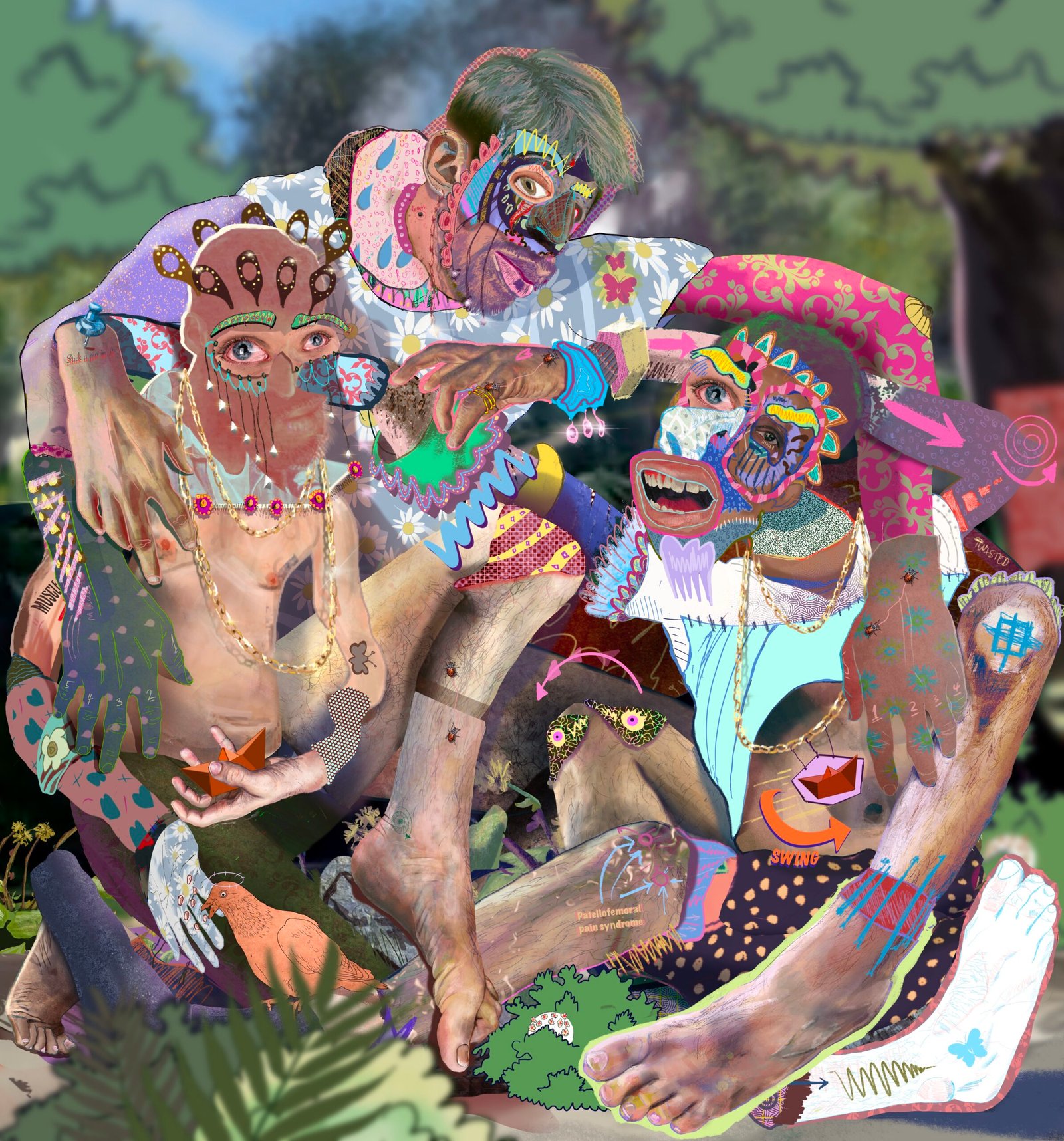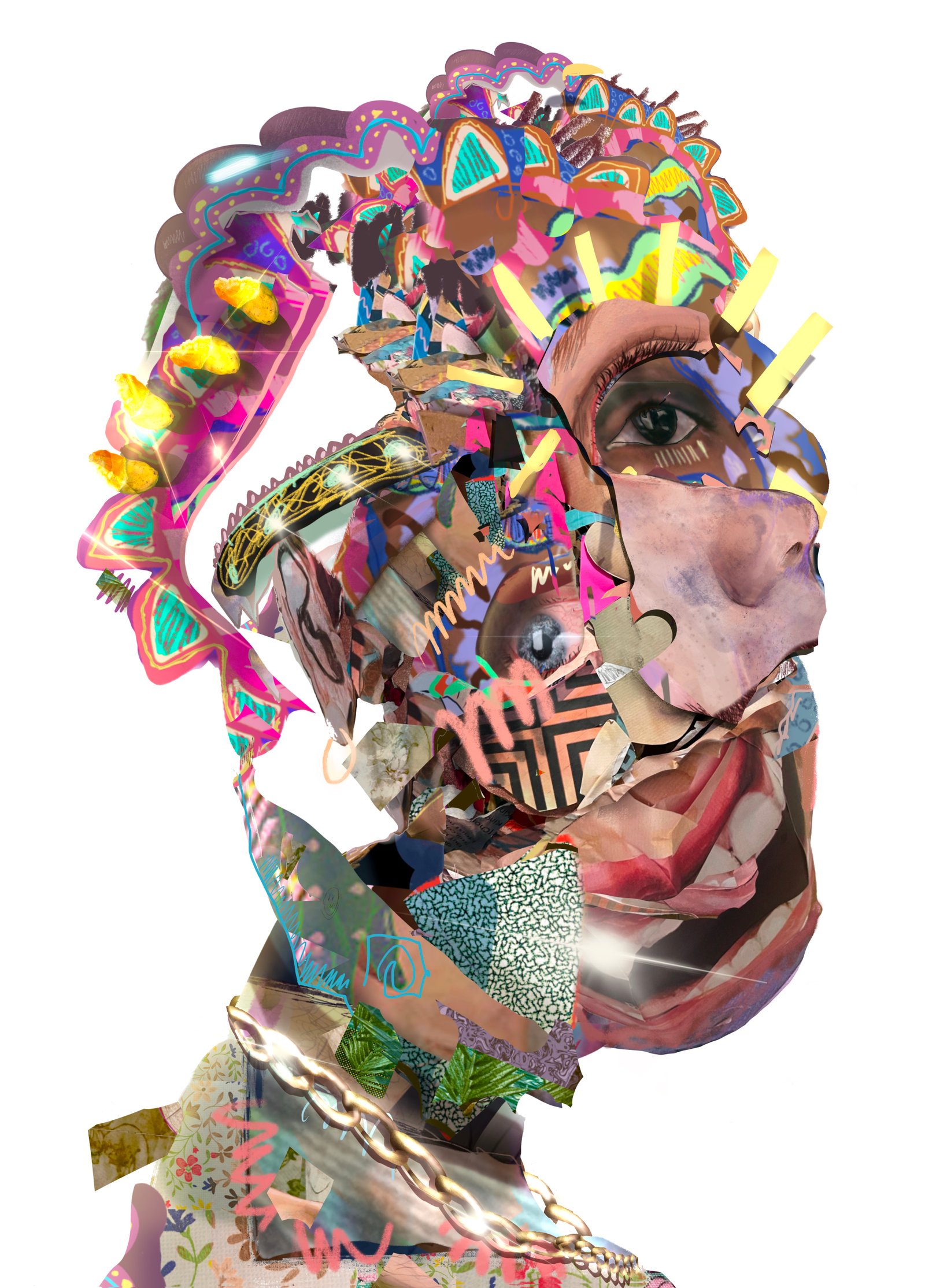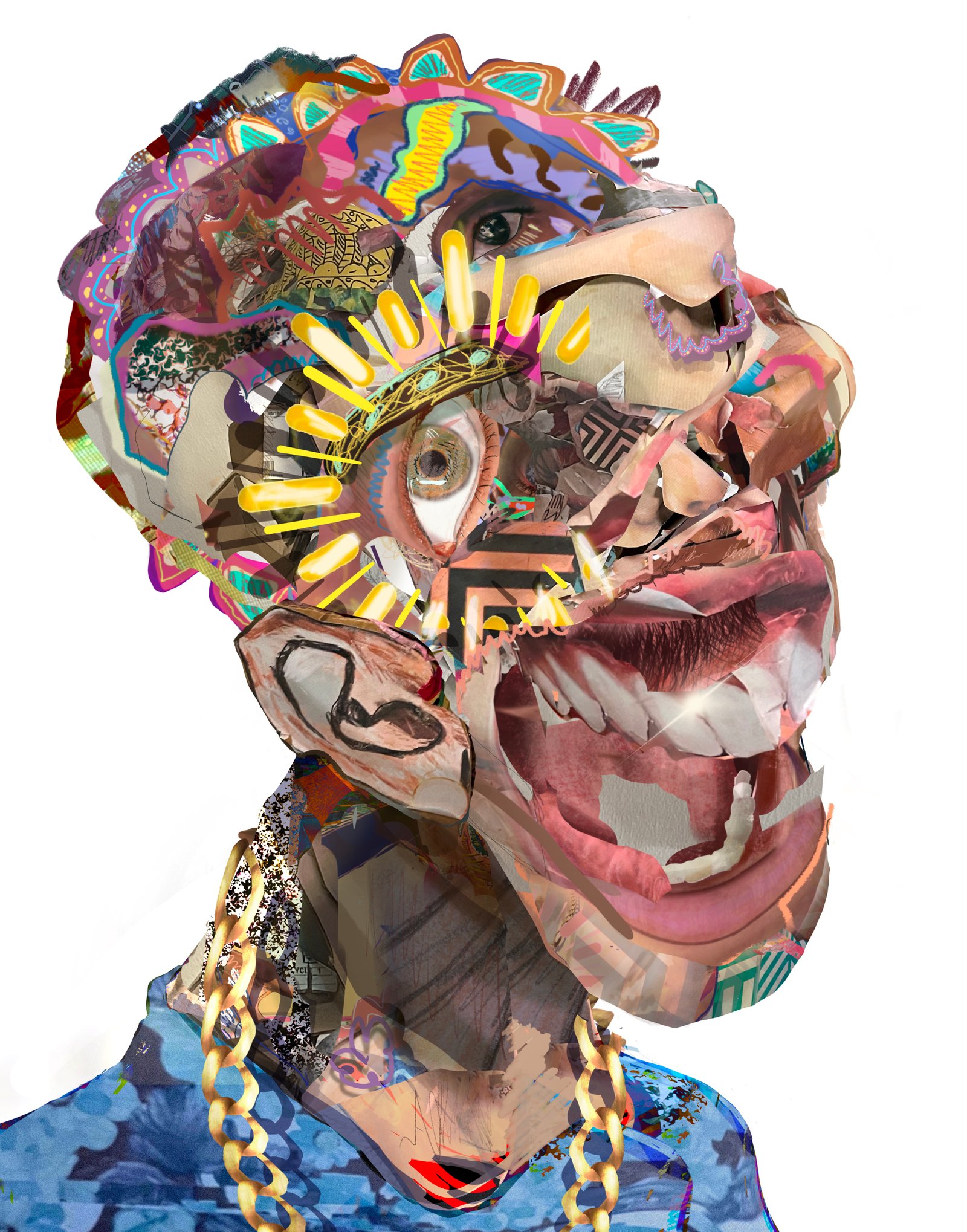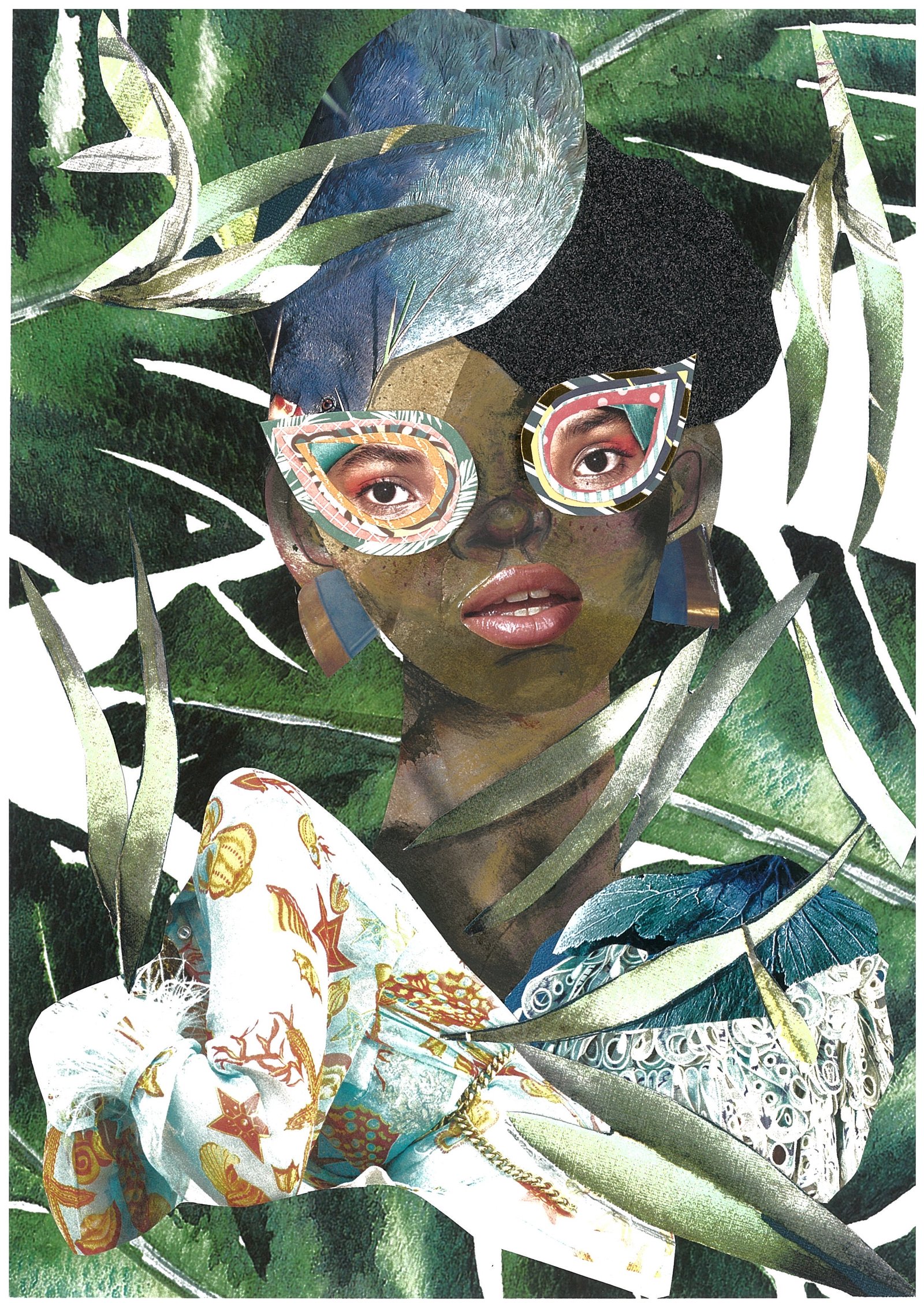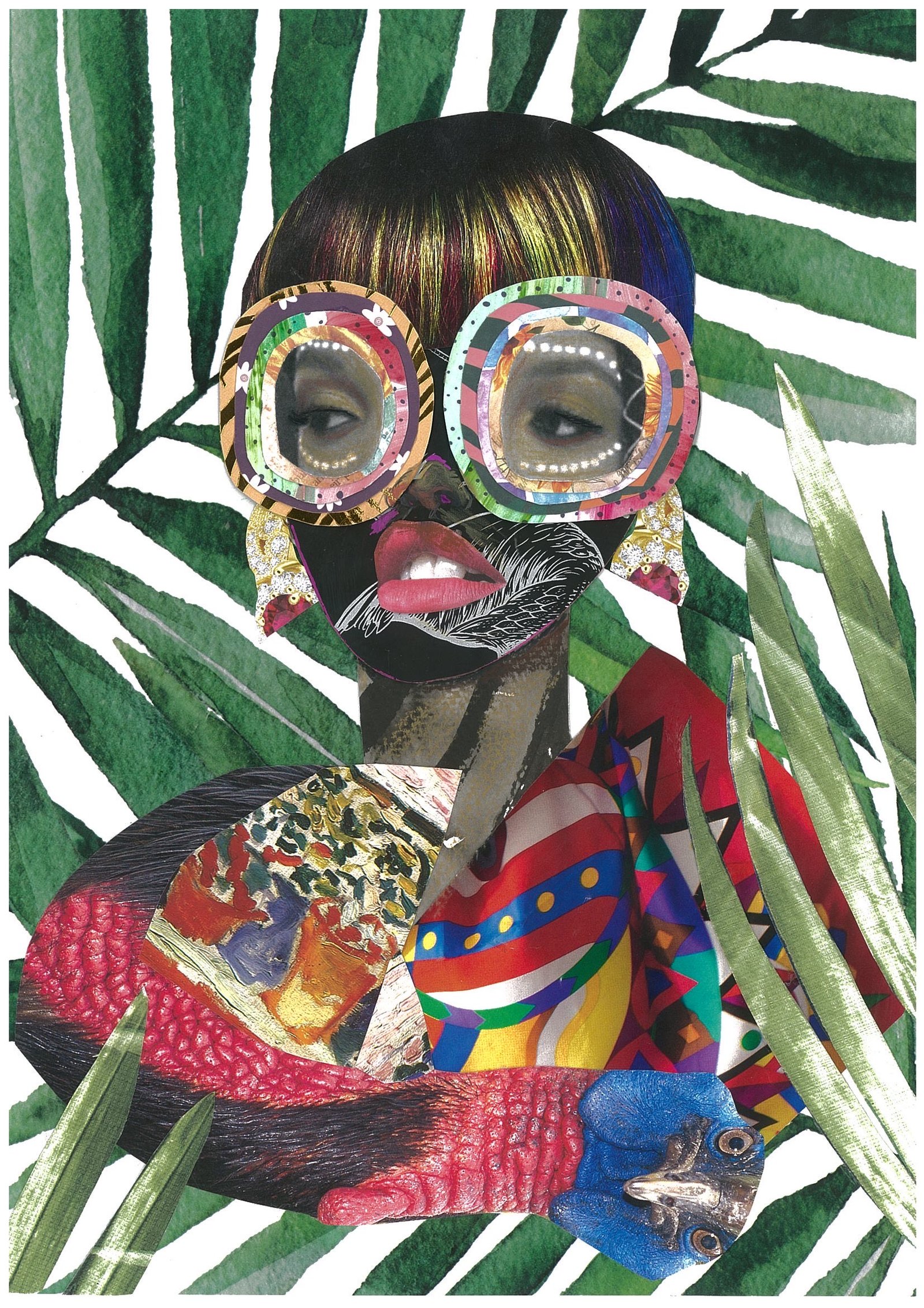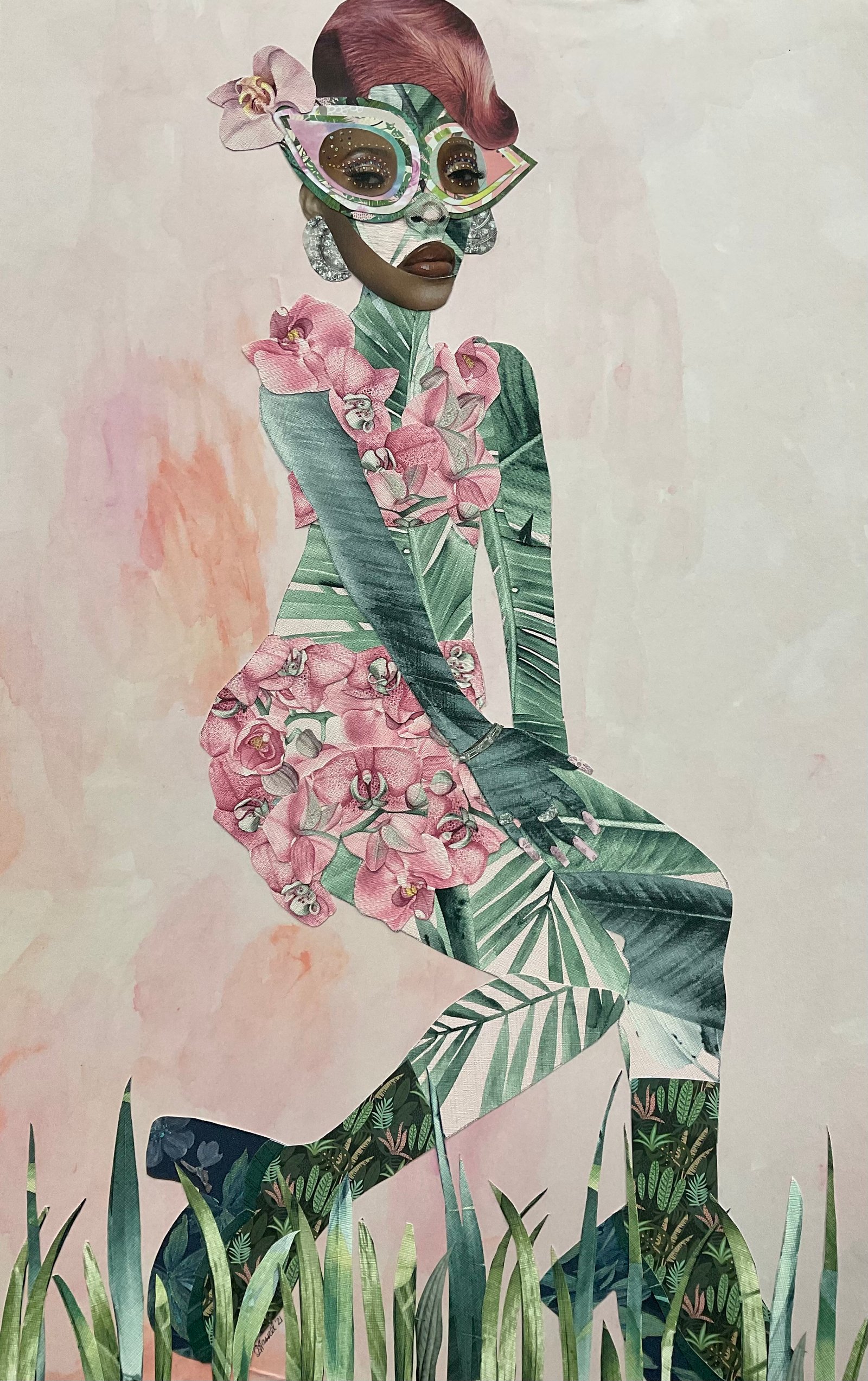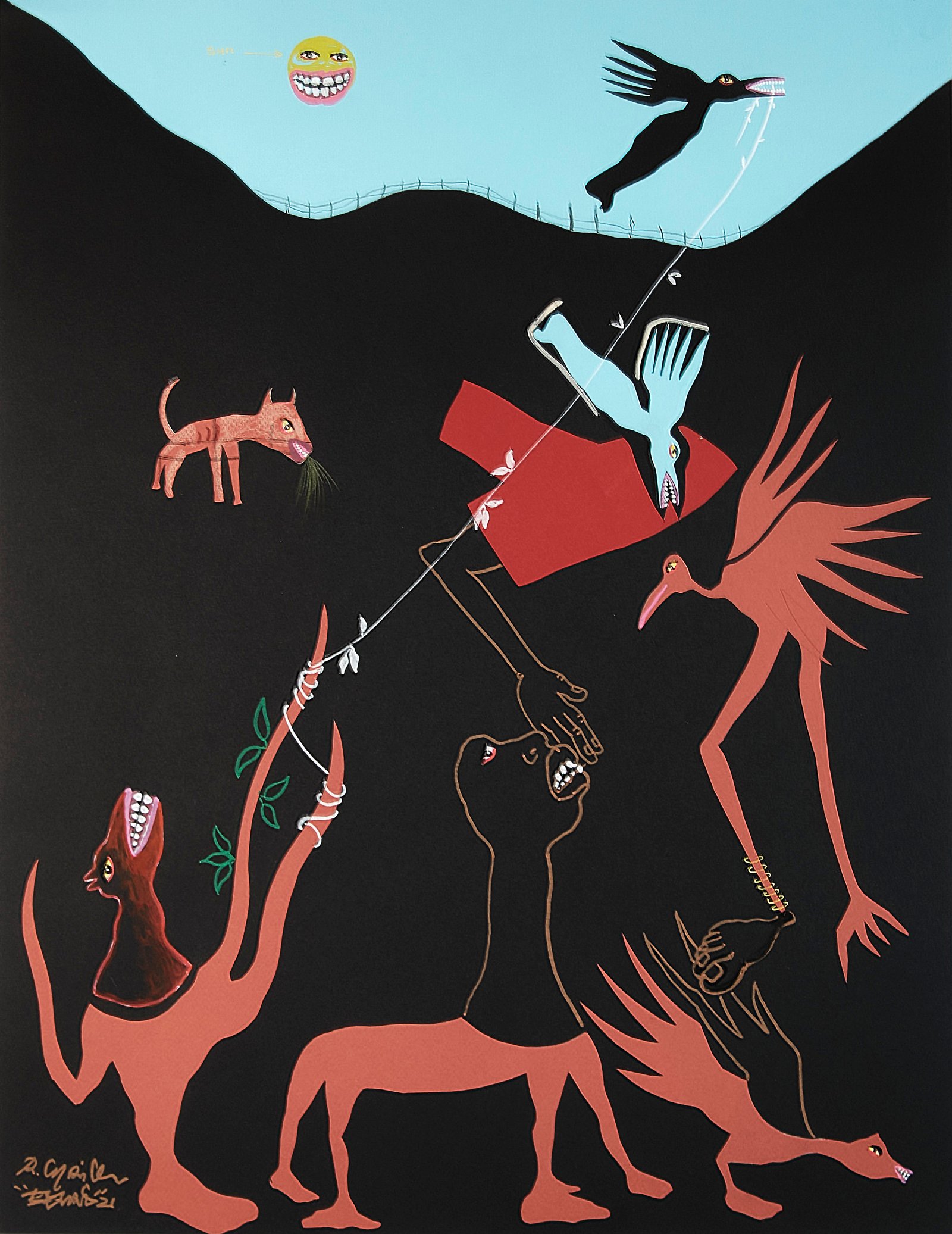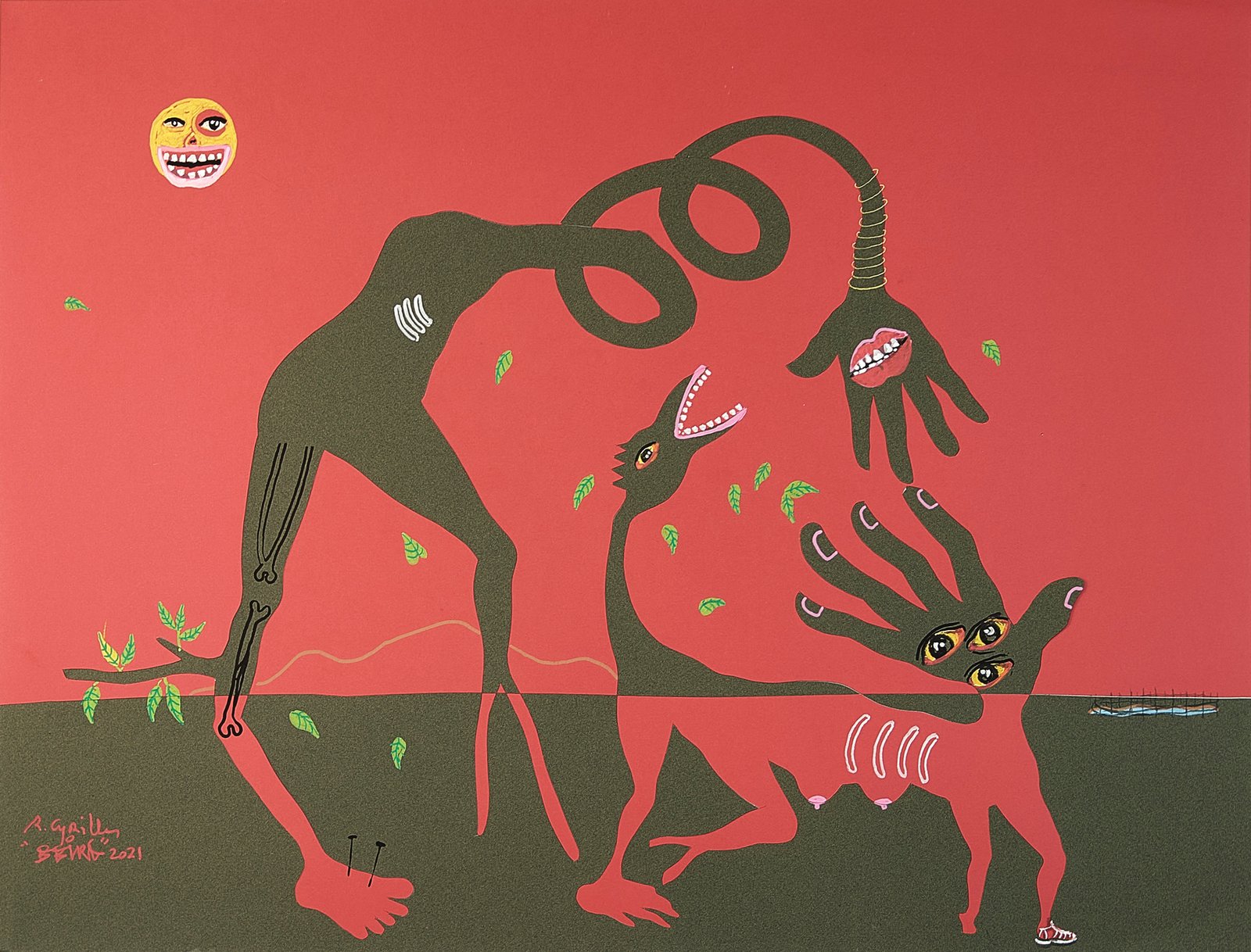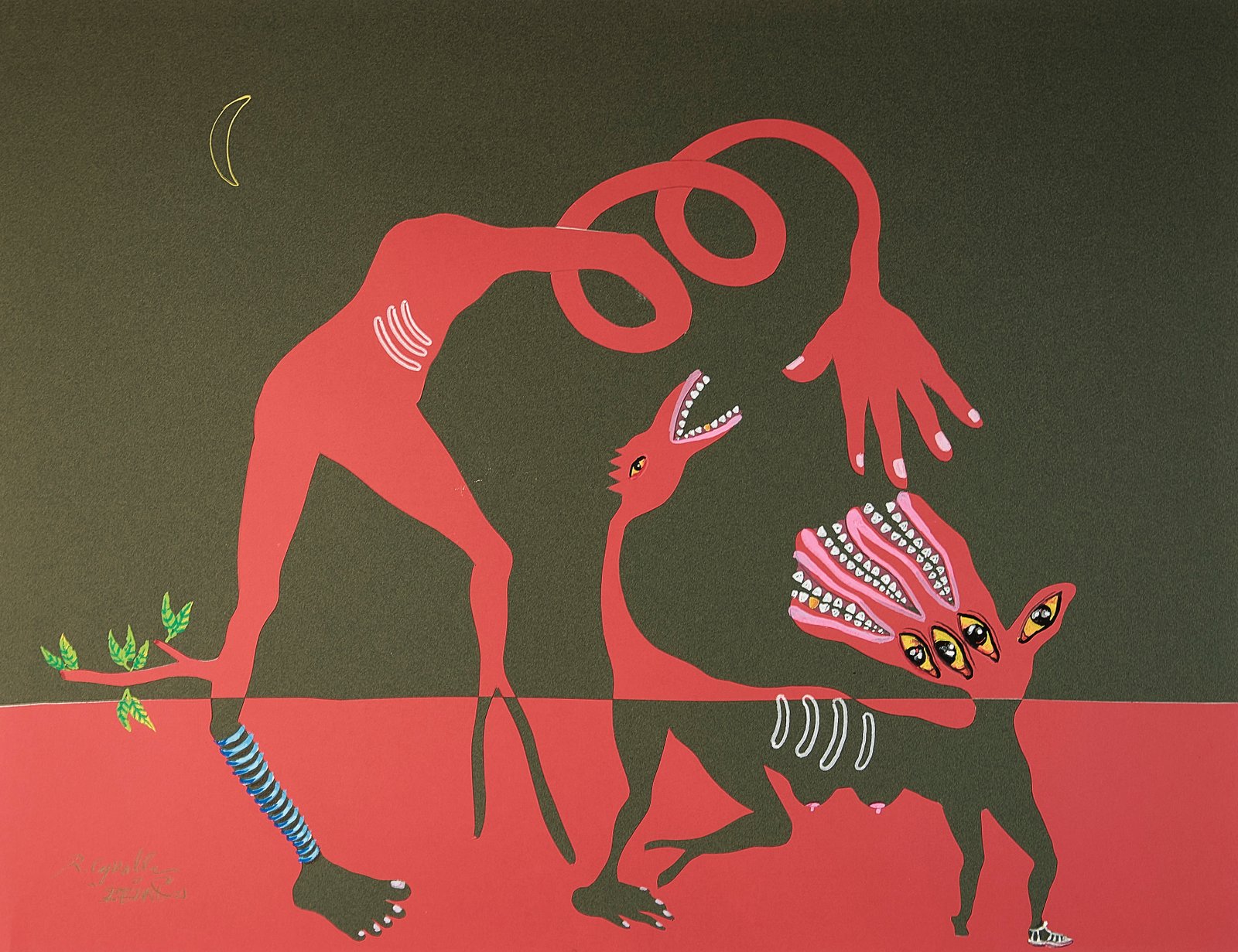Collage-based exhibition featuring Cydne Jasmin Coleby, Ronald Cyrille, Gherdai Hassell and Steven Schmid on view from January 27 to March 12, 2022
NASSAU, BAHAMAS — Amalgamating images, textures and textiles and remixing these resources into new compositions — whether digitally, paper-based or through mixed media — is an integral act in the collective approaches of the exhibited artists.
Within this collecting and re-presenting, each artist weaves their histories and curiosities into the fabric of the work, giving space for the audience to present their own.
Cydne Jasmin Coleby’s work tethers between self and family portraits. The multimedia work functions as a vehicle for introspection and navigation of generational traumas.
The density of the media alludes to the Afro-Bahamian tradition of pasting and costume-making for Junkanoo, which combines elements of paint, crêpe paper, glitter and decorative stones. Coleby folds this ancestral consume-making technique with natural elements, like sand, creating two-dimensional relief works.
In contrast, the texture within Steven Schmid’s work is formed through his constant experimentation with various digital and physical mediums. Examining how histories, stories and experiences can physically exist on a body, Schmid reconfigures and amalgamates past works with new imagery to create figures that are constantly evolving.
Combining various family and self-portraits with symbolism representing their various lived experiences, Schmid’s figures examine the complexities and contradictions of our everyday lives.
Thematically, Schmid focuses on nostalgia, masculinity and otherness, creating colorful, vibrant and fantastical representations. The portraits exist as nimble lampoons of masculinity and identity politics in Bahamian society.
Like Coleby and Schmid in their mining of history as a resource for their practices, Gherdai Hassell utilizes the same conceptual bases. Hassell highlights our universal interconnectivity and flattens disparities of time and relation.
Matriarchal lineage — and how it closes the disparity of the past and present, the kin and the stranger —becomes essential to Hassel’s work. This manifests in her use of women as subject matter. The papers, fabrics and stones used for the collages are a part of a disillusioned time repository.
As Hassell’s figures come to life through the amalgamation of paper, Ronald Cyrille’s figures and landscapes do the same. Cyrille’s oeuvre encompasses spray-painted murals, acrylic and oil paintings and now collages.
The same lush yet ominous landscape and anthropomorphic figures traverse each output, creating a world within the already constructed landscape of the Caribbean. Unlike his painting practice, Cyrille’s collages are minimal, often diptychs, but the mysticism remains.
Our island nations in the Global South are collages within themselves. They are repeating islands of multiculturalism, sustained through the insistence of innovation and resourcefulness. In this collective urgency, we see collage as the transferable principle. The repurposing of bleach bottles as jugs to carry water to and fro government pumps in borrowed trolleys. The coexistence of flamboyants/poinciana trees with shrubbery growing between limestone hills lined with coconut trees. To not expect collage from artists in this region is to overlook the histories and practices of those who live here. This exhibition seeks to highlight those artists, their histories and their work.



